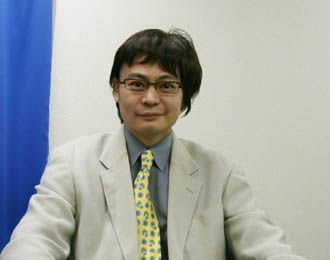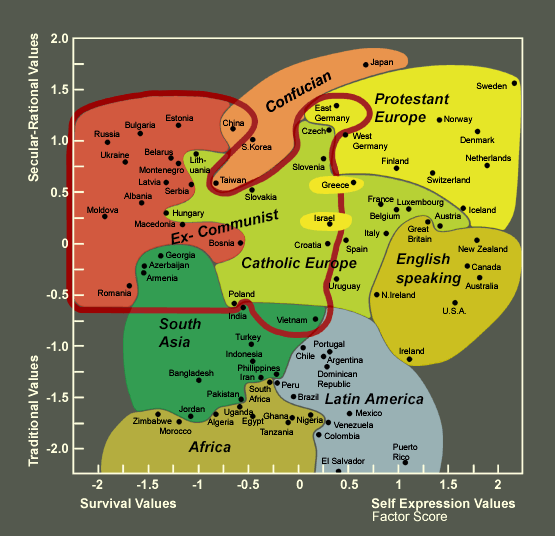 Shinjin datsuraku (身心脱è?½) is Dogen’s trademark phrase. It’s said to be a phrase his teacher Nyojo was fond of; some say it’s the phrase which Dogen became enlightened upon hearing. It is found throughout both Shobogenzo and other writings by Dogen. English translations invariably render this as casting off body and mind. Reading these translations you can almost hear the translators saying to themselves, great, there’s something I don’t have to think about how to translate, and the readers saying to themselves, my, what a very Zen-like thing for Dogen to say. But this translation is not just wrong, it’s harmful. I’m just imagining all the poor Zen students sitting there on their cushions trying to figure out how to cast off their bodies and minds like the book says!
Shinjin datsuraku (身心脱è?½) is Dogen’s trademark phrase. It’s said to be a phrase his teacher Nyojo was fond of; some say it’s the phrase which Dogen became enlightened upon hearing. It is found throughout both Shobogenzo and other writings by Dogen. English translations invariably render this as casting off body and mind. Reading these translations you can almost hear the translators saying to themselves, great, there’s something I don’t have to think about how to translate, and the readers saying to themselves, my, what a very Zen-like thing for Dogen to say. But this translation is not just wrong, it’s harmful. I’m just imagining all the poor Zen students sitting there on their cushions trying to figure out how to cast off their bodies and minds like the book says!
Chinese has thousands of two-character words, each of whose meanings is some composition of the meaning of the individual characters. Take seishi (生æ»), composed of the characters for “life” and “death”. Superficially, we have no clue what the compositional semantics are. It could be “and”, yielding the meaning life and death. But the meaning could just as easily be living death, life vs. death, the unity of life and death, life then death, or death via life. In other cases, the two characters mean approximately the same thing and the effect of combining them is emphasis.
In the compound shinjin, the first shin means physical body, the second kokoro (mind, heart, spirit). The “default” compositional semantics are “and”, giving us mind and body. But wait. Let’s apply the test of common-sense that so many translators fail to. Is it logical that Dogen would be telling us to let our “mind and body” fall away? How can we possibly let our body fall away? And Dogen teaches, in Bendowa among other writings, that the very concept of a body-mind distinction is a fallacy, so why would he be talking about something which he himself doesn’t think exists dropping away? Dogen, the down-to-earth teacher who instructs us to just sit, is now suddenly telling us to enter some kind of disembodied state?
It makes far more sense that Dogen would be using the term shinjin in the sense of the distinction between body and mind, whether or not that was a common sense in medieval Japan, or a sense he or his teacher pioneered. What needs to be cast off, or rather dropped off, then, is not a non-existent mind, or a body that is who we are, but rather the mistaken dichotomy between them. Or our fixation on that dichotomy.
As for datsuraku, or totsuraku as it’s sometimes spelled. I don’t think the meaning of this word has changed very much during the last 800 years. Its meaning in modern Japanese is drop out (of a race, or school).
That’s why my translation of shinjin datsuraku is drop out of the body/mind game.
 Investigating the Mind 2005 is an exciting conference scheduled for November in DC, the theme being “The Science and Clinical Applications of Meditation.” It is sponsored by the Mind & Life Institute, founded by the Dalai Lama and a neuroscientist to “create a rigorous dialogue and research collaboration between modern science, and Buddhism,” and co-sponsored by the Johns Hopkins School of Medicine, and Georgetown University Medical Center.
Investigating the Mind 2005 is an exciting conference scheduled for November in DC, the theme being “The Science and Clinical Applications of Meditation.” It is sponsored by the Mind & Life Institute, founded by the Dalai Lama and a neuroscientist to “create a rigorous dialogue and research collaboration between modern science, and Buddhism,” and co-sponsored by the Johns Hopkins School of Medicine, and Georgetown University Medical Center.

 The “Mozart effect” is now firmly ensconced as a mass culture meme. But what is the precise mechanism at work?
The “Mozart effect” is now firmly ensconced as a mass culture meme. But what is the precise mechanism at work? Shinjin datsuraku (身心脱è?½) is Dogen’s trademark phrase. It’s said to be a phrase his teacher Nyojo was fond of; some say it’s the phrase which Dogen became enlightened upon hearing. It is found throughout both Shobogenzo and other writings by Dogen. English translations invariably render this as casting off body and mind. Reading these translations you can almost hear the translators saying to themselves, great, there’s something I don’t have to think about how to translate, and the readers saying to themselves, my, what a very Zen-like thing for Dogen to say. But this translation is not just wrong, it’s harmful. I’m just imagining all the poor Zen students sitting there on their cushions trying to figure out how to cast off their bodies and minds like the book says!
Shinjin datsuraku (身心脱è?½) is Dogen’s trademark phrase. It’s said to be a phrase his teacher Nyojo was fond of; some say it’s the phrase which Dogen became enlightened upon hearing. It is found throughout both Shobogenzo and other writings by Dogen. English translations invariably render this as casting off body and mind. Reading these translations you can almost hear the translators saying to themselves, great, there’s something I don’t have to think about how to translate, and the readers saying to themselves, my, what a very Zen-like thing for Dogen to say. But this translation is not just wrong, it’s harmful. I’m just imagining all the poor Zen students sitting there on their cushions trying to figure out how to cast off their bodies and minds like the book says! Coming soon to a mobile phone near you: ringtones that enhance brain functioning.
Coming soon to a mobile phone near you: ringtones that enhance brain functioning. What can we learn about translating Dogen from the problem of translating medieval Japanese poetry? Carl Kay (
What can we learn about translating Dogen from the problem of translating medieval Japanese poetry? Carl Kay ( Siddartha Gautama was enlightened at age 35, whereas Jesus of Nazareth’s breakthrough came at the age of 33. What is it about the early-to-mid-thirties anyway?
Siddartha Gautama was enlightened at age 35, whereas Jesus of Nazareth’s breakthrough came at the age of 33. What is it about the early-to-mid-thirties anyway?
 I shall have more to say about Jeff Hawkins’ book
I shall have more to say about Jeff Hawkins’ book